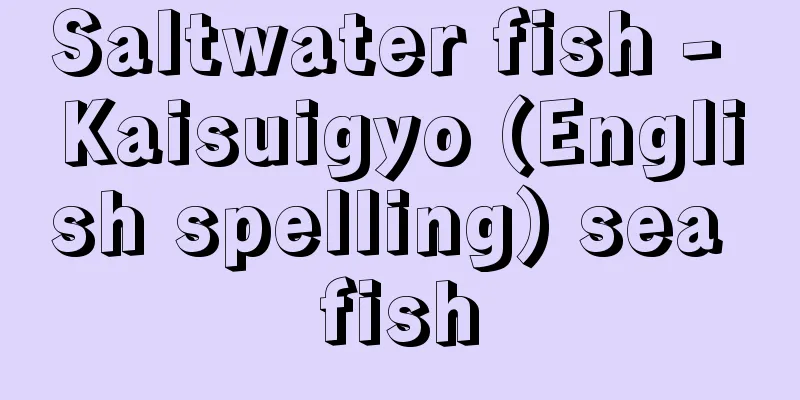Bito Jishu

|
A Confucian scholar of the late Edo period. His given name was Takamoto, his pen name Shiin, and his nickname was Ryosa. He was born to a shipping merchant in Kawanoe, Iyo Province. He injured his leg at a young age, but he devoted himself to his studies, learning classical Japanese literature and philology from Ogyu Sorai. At the age of 24, he went to Osaka to study under Katayama Hokkai (1723-1790), and was associated with fellow student Yori Shunsui, and Nakai Chikuzan and Riken of Kaitokudo. While he excelled in poetry and prose, he turned to Neo-Confucianism and studied and advocated it as "Sei-gaku" (orthodox school of thought) with his comrades, including Yori Shunsui and Shunpu (1753-1825) and Koga Seiri. In 1791 (Kansei 3), when the ban on heretical learning was imposed during the Kansei era, he was summoned by the shogunate and served as a Confucian scholar at the Shoheiko Academy for 20 years before dying in Edo. He was known as one of the Three Doctors of the Kansei era along with Okada Kansen (also known as Koga Seiri) and Shibano Ritsuzan. His writings include "Seigaku Shisho" (1784) and "Sosanroku" (completed in 1777), as well as the collection "Seikikenshu" (year of publication unknown). [Makoto Kurozumi June 20, 2016] "About Bito Nishu" by Yorii Kin (included in "Japanese Thought Series 37: The Sorai School", 1972, Iwanami Shoten) " "The Bito Nishu Biography" by Yutaka Shiraki (1979, Kawanoe City) " "A Study of the Neo-Confucian School in the Late Early Modern Period" by Yoriitsu (1986, Keisui-sha) [References] | | | | | | | |Source: Shogakukan Encyclopedia Nipponica About Encyclopedia Nipponica Information | Legend |
|
江戸後期の儒学者。名は孝肇(たかもと)、字(あざな)は志尹(しいん)、通称は良佐。伊予国川之江の廻船(かいせん)業者の家に生まれた。幼時に足を傷め、学問に励んで荻生徂徠(おぎゅうそらい)の古文辞学などを学んだ。24歳のとき大坂に出て片山北海(かたやまほっかい)(1723―1790)に師事、同門の頼春水(らいしゅんすい)、懐徳堂(かいとくどう)の中井竹山(ちくざん)・履軒(りけん)らと交わった。詩文をよくする一方、思想面では朱子学に転じて、頼春水・春風(1753―1825)、古賀精里(こがせいり)らの同志と、これを「正学」として考究・唱導した。寛政(かんせい)異学の禁に際して、1791年(寛政3)幕府に召し出され、昌平黌(しょうへいこう)の儒官を20年勤めて江戸に没した。岡田寒泉(おかだかんせん)(または古賀精里)、柴野栗山(しばのりつざん)とともに寛政(かんせい)の三博士(はかせ)と称せられた。著述に『正学指掌(せいがくししょう)』(1784)『素餐(そさん)録』(1777成立)など、また集として『静寄軒集』(刊年未詳)がある。 [黒住 真 2016年6月20日] 『頼惟勤著『尾藤二洲について』(『日本思想大系37 徂徠学派』所収・1972・岩波書店)』▽『白木豊著『尾藤二洲伝』(1979・川之江市)』▽『頼一著『近世後期朱子学派の研究』(1986・渓水社)』 [参照項目] | | | | | | | | |出典 小学館 日本大百科全書(ニッポニカ)日本大百科全書(ニッポニカ)について 情報 | 凡例 |
Recommend
Descriptive petrology
…the science that elucidates the distribution, ge...
Transesterification reaction - Transesterification reaction
…(4) Reacting silver carboxylate with an alkyl ha...
N-cascade (English)
…When the incident particle is a hadron, multiple...
Loyalty - Chuushin
〘Noun〙 Loyalty and faith. Faithfulness and faithfu...
Innocho shimbun - Innocho shimbun
A document issued by the Incho, the government age...
D'Alembert's Principle - The Disappointment of D'Alembert
One of the principles of mechanics introduced by ...
Oxya yezoensis (English spelling) Oxyayezoensis
…[Tokuji Chiba]. … *Some of the terminology that ...
Vāgbhaṭa (English spelling)
A 7th-century Indian physician. Dates of birth and...
Gujarati - Gujaratigo
...The remaining 8% speak Urdu as their first lan...
Sākhya School
One of the six schools of Indian philosophy. In C...
Longley, CT (English spelling) LongleyCT
…The Archbishop of Canterbury is the convener and...
Orange Eye
…Burmese cats can be produced by crossing Persian...
Wolverine (crowing raccoon) - Wolverine (English spelling)
A carnivorous mammal of the Mustelidae family (ill...
Kikuchi Keigetsu
Japanese painter. Born in Nagano Prefecture. His ...
Uzu Lusiadas - The People of Lusitania
...He was even imprisoned. From a material point ...



![Eder [river] - Eder](/upload/images/67cfa18e7594e.webp)





